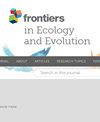Assessment of microphytobenthos communities in the Kinzig catchment using photosynthesis-related traits, digital light microscopy and 18S-V9 amplicon sequencing
IF 2.4
3区 环境科学与生态学
Q2 ECOLOGY
引用次数: 0
Abstract
IntroductionMicroalgae form an essential group of benthic organisms that respond swiftly to environmental changes. They are widely used as bioindicators of anthropogenic stressors in freshwater ecosystems. We aimed to assess the responses of microalgae communities to multiple environmental stressors in the Kinzig River catchment, home to a long-term ecological monitoring site, in Germany.MethodsWe used a photosynthetic biomass proxy alongside community composition of diatoms assessed by digital light microscopy, and of microalgae by 18S-V9 amplicon sequencing, to characterise microalgae at 19 sampling sites scattered across the catchment.ResultsOur results revealed significant effects of physical and chemical factors on microalgae biomass and community compositions. We found that conductivity, water temperature and pH were the most important factors affecting microalgae community composition, as observed in both microscopy and amplicon analysis. In addition to these three variables, the effect of total phosphate on all microalgae, together with water discharge on the diatom (Bacillariophyta) communities, as assessed by amplicon analysis, may reveal taxon-specific variations in the ecological responses of different microalgal groups.DiscussionOur results highlighted the complex relationship between various environmental variables and microalgae biomass and community composition. Further investigations, involving the collection of time series data, are required to fully understand the underlying biotic and abiotic parameters that influence these microalgae communities.利用光合作用相关特征、数码光学显微镜和 18S-V9 扩增子测序评估 Kinzig 集水区的微底栖生物群落
引言 微藻是底栖生物中的一个重要群体,能对环境变化做出迅速反应。它们被广泛用作淡水生态系统中人为压力因素的生物指标。我们的目的是评估德国 Kinzig 河集水区微藻群落对多种环境压力因素的反应,该集水区是一个长期生态监测点的所在地。方法我们使用光合生物量替代物,同时使用数码显微镜评估硅藻的群落组成,并使用 18S-V9 扩增子测序评估微藻的群落组成,以确定散布在集水区 19 个采样点的微藻特征。结果我们的结果显示,物理和化学因素对微藻生物量和群落组成有显著影响。通过显微镜和扩增子分析,我们发现电导率、水温和 pH 值是影响微藻群落组成的最重要因素。除了这三个变量外,总磷酸盐对所有微藻的影响,以及通过扩增子分析评估的水排放对硅藻(Bacillariophyta)群落的影响,可能揭示了不同微藻类群在生态响应方面的分类群特异性差异。要全面了解影响这些微藻群落的基本生物和非生物参数,还需要进一步开展调查,包括收集时间序列数据。
本文章由计算机程序翻译,如有差异,请以英文原文为准。
求助全文
约1分钟内获得全文
求助全文
来源期刊

Frontiers in Ecology and Evolution
Environmental Science-Ecology
CiteScore
4.00
自引率
6.70%
发文量
1143
审稿时长
12 weeks
期刊介绍:
Frontiers in Ecology and Evolution publishes rigorously peer-reviewed research across fundamental and applied sciences, to provide ecological and evolutionary insights into our natural and anthropogenic world, and how it should best be managed. Field Chief Editor Mark A. Elgar at the University of Melbourne is supported by an outstanding Editorial Board of international researchers. This multidisciplinary open-access journal is at the forefront of disseminating and communicating scientific knowledge and impactful discoveries to researchers, academics and the public worldwide.
Eminent biologist and theist Theodosius Dobzhansky’s astute observation that “Nothing in biology makes sense except in the light of evolution” has arguably even broader relevance now than when it was first penned in The American Biology Teacher in 1973. One could similarly argue that not much in evolution makes sense without recourse to ecological concepts: understanding diversity — from microbial adaptations to species assemblages — requires insights from both ecological and evolutionary disciplines. Nowadays, technological developments from other fields allow us to address unprecedented ecological and evolutionary questions of astonishing detail, impressive breadth and compelling inference.
The specialty sections of Frontiers in Ecology and Evolution will publish, under a single platform, contemporary, rigorous research, reviews, opinions, and commentaries that cover the spectrum of ecological and evolutionary inquiry, both fundamental and applied. Articles are peer-reviewed according to the Frontiers review guidelines, which evaluate manuscripts on objective editorial criteria. Through this unique, Frontiers platform for open-access publishing and research networking, Frontiers in Ecology and Evolution aims to provide colleagues and the broader community with ecological and evolutionary insights into our natural and anthropogenic world, and how it might best be managed.
 求助内容:
求助内容: 应助结果提醒方式:
应助结果提醒方式:


